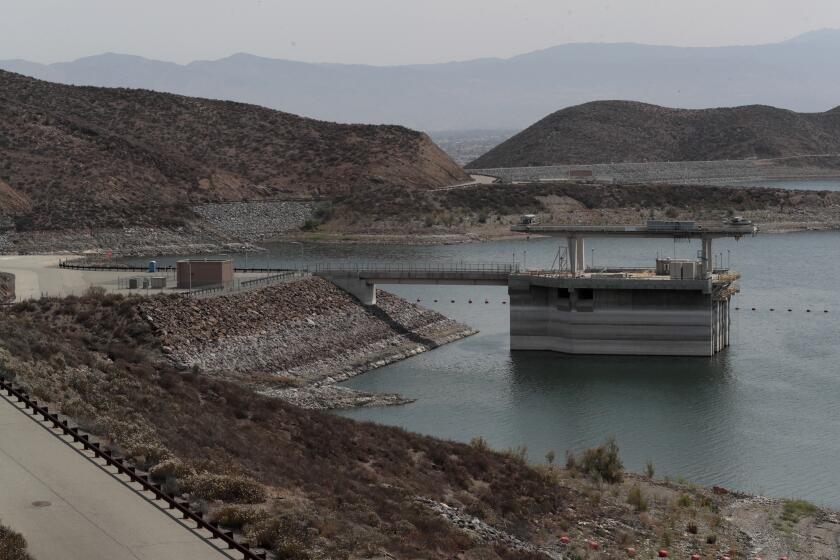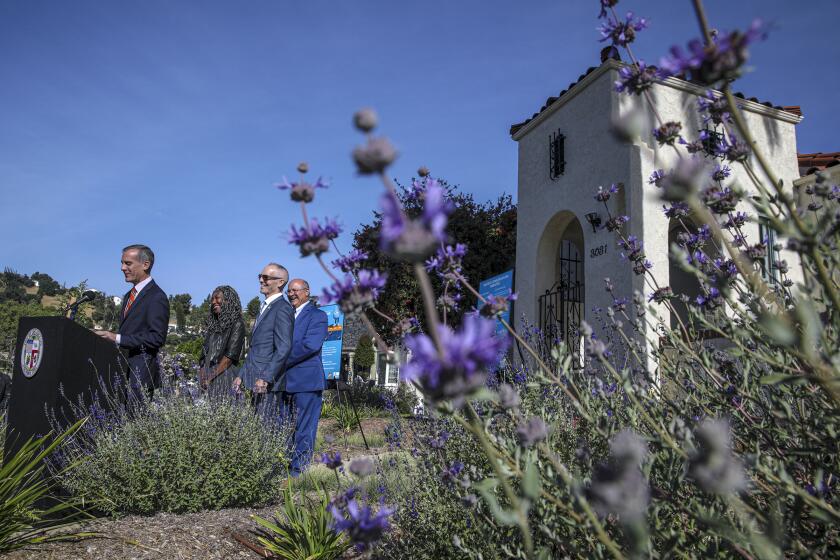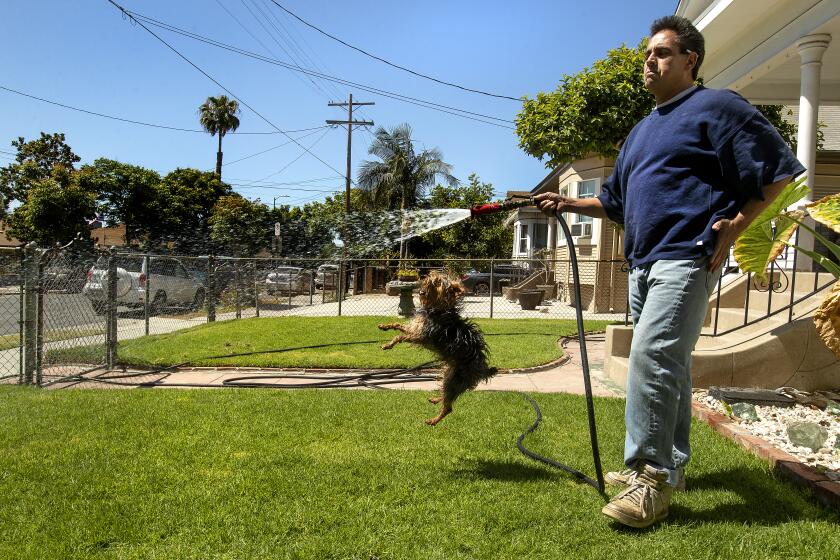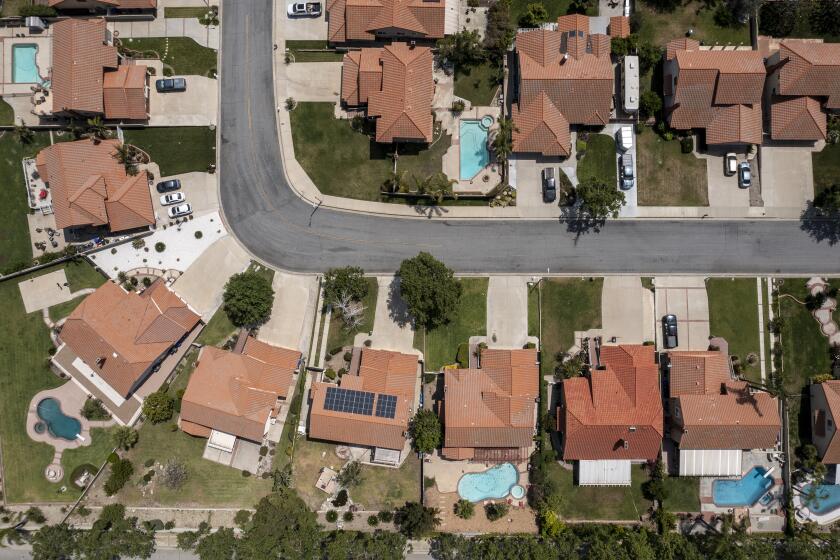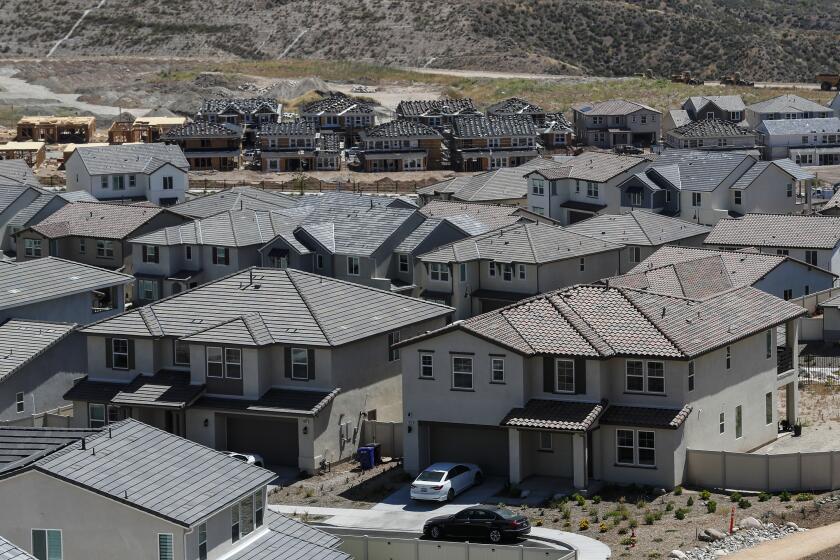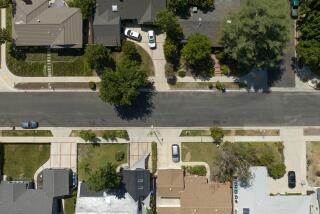Unprecedented water restrictions hit Southern California today: What they mean to you
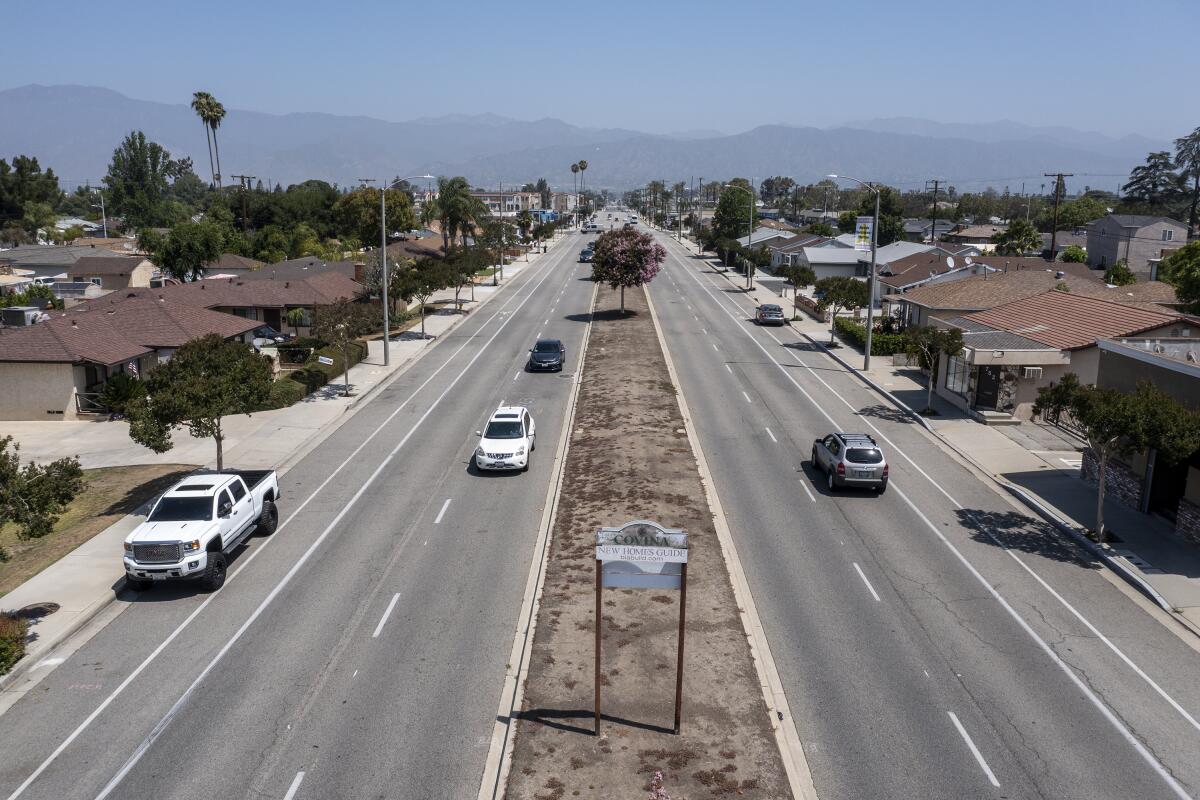
- Share via
Get ready for short showers and brown lawns: More than 6 million Southern Californians will be placed under new drought rules today in an unprecedented effort to conserve water.
The restrictions are a response to the Metropolitan Water District of Southern California’s urgent call for a 35% reduction in water use following California’s driest-ever start to the year. MWD’s board has never before issued such severe cuts, but said they were left with little recourse after state officials slashed deliveries from the State Water Project to just 5%.
“We have not had the supply to meet the normal demands that we have, and now we need to prioritize between watering our lawns and having water for our children and our grandchildren and livelihood and health,” MWD General Manager Adel Hagekhalil said during the agency’s announcement at the end of April.
More than 97% of the state is now under severe, extreme or exceptional drought, according to the U.S. Drought Monitor. Many of the region’s most critical reservoirs are at half capacity or less.
Here’s what you need to know about the new rules that begin today, June 1:
For the first time ever, Southern California water officials will limit outdoor watering to just once a week in certain areas beginning June 1.
Who is affected?
As a wholesaler, MWD has aimed its cuts at parts of Los Angeles, Ventura and San Bernardino counties that are dependent on supplies from the State Water Project, a vast network of canals, pipelines, reservoirs and pumping facilities that transport water from Northern California rivers to farmlands and cities to the south.
Six agencies that receive water from MWD will be affected by the rules: the Los Angeles Department of Water and Power, the Inland Empire Utilities Agency, the Las Virgenes Municipal Water District, Calleguas Municipal Water District, Three Valleys Municipal Water District and Upper San Gabriel Valley Municipal Water District.
Several of those agencies are themselves wholesalers that provide water to dozens of smaller regional suppliers.
Areas that get water from another major source in the region, the Colorado River, have been spared for now, although officials have warned that it is also reaching critical lows.
As California drought worsens, the DWP in Los Angeles will limit outdoor watering to two days a week, with watering capped at eight minutes per station.
What are the rules?
Each agency is taking a slightly different approach to achieving the required reduction, meaning there is a patchwork of rules across the region. Most are focusing their restrictions on outdoor watering since it accounts for roughly half of all urban water use.
MWD’s largest member agency, LADWP, is limiting its entire service area — that is, nearly everyone in the city of L.A. — to two-day-a-week watering at only 8 minutes per station per day, or two 15 minute-cycles per watering day for sprinklers with water-conserving nozzles.
Residents will be assigned watering days based on their addresses: Monday and Friday for odd addresses and Thursday and Sunday for even ones. No watering will be allowed between 9 a.m. and 4 p.m. regardless of the watering days.
From Boyle Heights to Bel-Air, it’s going to be a summer of brown grass and hard choices.
Those who don’t comply with the new rules will receive a warning, followed by escalating fines for each subsequent violation, officials said. LADWP will ramp up patrols to look for people violating rules or wasting water.
Some agencies, including the Las Virgenes Municipal Water District, are going a step further and opting for one-day-a-week watering limits. That agency provides water to about 75,000 residents in Calabasas, Agoura Hills, Hidden Hills and Westlake Village.
Others, including the Inland Empire Utilities Agency and the Ventura-based Calleguas Municipal Water District, both wholesalers, are tapping each of their member agencies to institute the best plans for their areas. Some will go to one-day-a-week watering, while others are sticking to volumetric allocations based on available supplies, officials said.
The West Basin Municipal Water District, which supplies water to residents in areas including Culver City, El Segundo, Inglewood and Palos Verdes Estates and Malibu, is also calling for two-day-a-week watering limits across its service area.
While some water agencies are urging the use of pool covers, most stop short of prohibiting the filling of swimming pools.
Are there exceptions to the rules?
Most agencies, including the DWP, are making exceptions for hand-watering and for drip irrigation that supplies water to a food source.
What about trees, pools and golf courses?
Though officials have said Southern California “cannot afford green lawns,” they have stressed that they do not want trees to die. Trees provide valuable shade, replenish groundwater and help stave off heat effects, among other benefits
Fortunately, experts said the new drought restrictions shouldn’t have an effect on trees if followed correctly.
“Even the most delicate trees would be happy with eight minutes twice a week, and the larger trees will be happy with the occasional heavy watering by hand,” board certified master arborist Nick Araya told The Times.
Swimming pools have also been a question for many in the area. Under the current rules, most water agencies recommend — but do not yet require — the use of pool covers to prevent evaporation.
The DWP, for example, said only the next phase of its drought ordinance would make covering residential pools a requirement, while the final phase, Phase 5, would prohibit filling them with water.
Some residents said the lax pool rules are sending a mixed message, but the California Pool & Spa. Assn. said they make sense: Though the average pool requires 14,000 to 18,000 gallons of water to initially fill, pools can help save water over time by replacing thirsty grass that would require constant watering.
Many residents have also pointed out that golf courses account for a huge amount of grass in the city, but officials have said some golf courses — both private and municipal — use recycled water. Courses that don’t will be required to work with the city to achieve reduction targets.
And while showers aren’t officially in the crosshairs of the cuts, people are being asked to save water wherever they can, including in the shower. State officials last month encouraged Californians to shorten their showers to five minutes and switch away from baths, which can use up to 2.5 times as much water.
Experts say there’s plenty of water available for new Californians if the trend of residents using less continues and accelerates into the future.
What’s the long-term plan?
MWD officials have already said they are authorized to institute a full outdoor watering ban as soon as September if conservation efforts do not improve, and Gov. Gavin Newsom last week said the state could be forced to impose mandatory restrictions for the same reason.
While the new outdoor watering limits should help achieve immediate savings, some have pointed out that they’re a short-term solution to what will likely be a long-term problem.
“With climate change, this is not a temporary drought condition,” Councilman Paul Krekorian said during last week’s L.A. City Council meeting about the ordinance. “This is our future, and those dark red areas [on the U.S. Drought Monitor map] are going to get bigger.”
City, county and state officials are working toward solutions, including improving infrastructure and water conveyance systems, as well as investing in enhanced capabilities for groundwater remediation, stormwater capture and water recycling.
One major initiative, Operation Next, aims to recycle as much as 100% of purified wastewater from the Hyperion Water Reclamation Plant by 2035.
Los Angeles is also investing heavily in rebate programs for turf replacement and appliance upgrades to improve residents’ water efficiency, and the state last week banned watering ‘nonfunctional’ grass at commercial, industrial and institutional properties.
And while MWD’s new drought rules are aimed primarily at urban users, officials have acknowledged that the vast majority of the state’s water that is used by humans goes toward agriculture — as much as 80%. Many farmers this year were put on notice that they, too, will receive limited allocations from state and federal suppliers.
More to Read
Sign up for Essential California
The most important California stories and recommendations in your inbox every morning.
You may occasionally receive promotional content from the Los Angeles Times.
